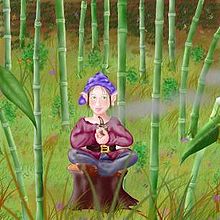User:Uffda608/Elf (norse mythology)

Elf (old norse álfr) is the pre-christian germanic and norse mythological name for a type divine creature with a prominent place in religion. It later became a collective name in folklore for a group of adventurous and supernatural creatures. In its original pre-Christian form, the elves were probably perceived as a personification of the land and nature that surrounded humans, for example: the cultivated land, the farm and the natural resources that belonged to it. (see also animism).They were divine or partially divine beings who possessed magical powers which they used both for the benefit and disadvantage of human beings.
The elves were just one group of powerful beings in norse mythology which included the most powerful æsir and vanir, in addition to dísir, norns, dwarves, fylgjur, jötunn, seeresses, valkries and wights. Most of these lesser powerful beings were noteworthy outside of their collective group, and only a few stand out as named figures.
The elves were divided into two groups, the light and the dark, but there is no consensus on how to distinguish the two groups. The light elves bear many similarities to the æsir and vanir, while the dark elves seem have parallels to the dwarves (see Dökkálfar and Ljósálfar).

[[Category:Norse mythology]] [[Category:Folklore]]
